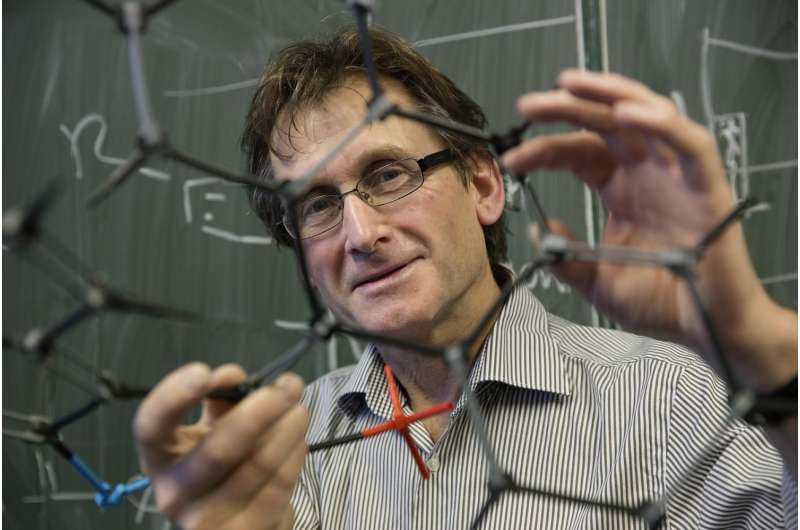Locked movement in molecular motor and rotor

For a motor to power machinery, the local motion has to be translated into the ordered movement of other parts of the system. University of Groningen organic chemists led by professor Ben Feringa are the first to achieve this in a molecular motor. They have produced a light driven rotary motor in which the rotary movement is locked to that of a secondary naphthalene rotor. The results will be published on 2 June in the journal Science.
The naphthalene rotor is attached to the motor by a single carbon-carbon bond, which allows it to rotate freely. But the design of the system has been tweaked to control its movement. In the same way as the Moon orbits the Earth but keeps the same side towards us, the naphthalene rotor keeps the same relative position to the motor while describing a circle around it.
"It took some tricky stereochemistry to build this system. I think we've spent four or five years working on it", says Feringa, who was one of recipients of the 2016 Nobel Prize for Chemistry for his pioneering work on molecular motors. "But we have now taken a fundamental step in the development of molecular machines: the synchronization of movement."
Balance
During the four steps it takes the motor to make one full revolution, the naphthalene rotor is limited in its movement by the rest of the molecule. This is how the two movements are coupled. "We had to carefully strike a balance between limiting the movement of the rotor, while allowing it to change its position." The team designed and built two versions, in which the rotor was either pointing inwards or outwards, and was pushed or pulled by the motor.
By locking two moving parts, the Feringa group has taken another step towards building molecular machines. "In biology, you see many of these systems where molecules are connected in a cog-like manner, which can synchronize or amplify movement. As far as I'm aware, this has never been done in artificial systems like our own."
The system which the Feringa group describes in Science has no practical application. "But we have now shown it is possible to transmit movement", says Feringa. "Like how we built our first molecular car six years ago to show that it is possible to use the revolving motion of our molecular motor to create directional movement on a surface."
More information: DOI: 10.1126/science.aam8808 "Locked synchronous rotor motion in a molecular motor" Science (2017). science.sciencemag.org/cgi/doi … 1126/science.aam8808
Journal information: Science
Provided by University of Groningen



















